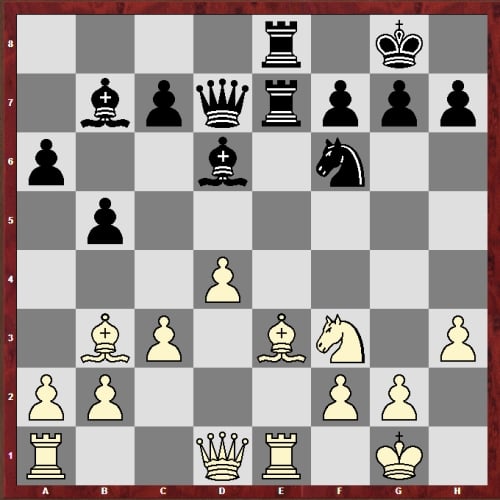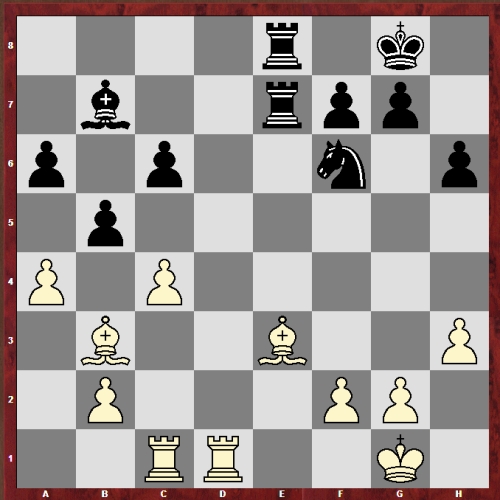Chess Lesson with FIDE Master Dennis Monokroussos
The Candidates’ chess tournament is underway as of this writing, and it is the most important chess tournament of the year. The winner wins the right to play Magnus Carlsen for the world championship this November, so a lot is at stake.
Two of the favorites – who are also the co-leaders as I write this, after the eighth round – are ex-world champion Viswanathan Anand and top seed Levon Aronian. As it turned out, their first game was in round 1 (it’s a double round-robin), and after 18 moves they reached this position, with Anand (to move) playing White:

Anand-Aronian Chess Lesson
Black sacrificed a pawn earlier, and it looks like a wise investment. All of his pieces are active and coordinated, while White’s development is stunted. The bishop on e3 blocks the rook, the vulnerability of the knight on f3 ties down White’s queen, and White’s queen in turn keeps the rook on a1 more or less out of the game.
But here the former chess champion had an inspiration. Emanuel Lasker said long ago that the best way to meet a gambit was to accept it, and then return it at an appropriate moment to release the energy of one’s own pieces. This is just what Anand did. He returned the extra pawn, but in exchange for the material he gained the bishop pair and his pieces came to life. This is what he played:
19.Ne5!!
Black cannot abide the knight on this square, so 19.Bxe5 20.dxe5 Rxe5 ensued. White continued with 21.Qxd7 Nxd7 22.Red1 Nf6 and now assailed Black’s queenside with 23.c4! c6 24.Rac1 R5e7 25.a4!

Anand-Aronian Chess Lesson Part II
Now it’s White’s chess pieces that are active and coordinated, while Black’s forces are tied down and lack any positive harmony. Anand went on to win very nicely, and it was all made possible by his brilliant 19th move. The moral of the story is that material is only one good. If creating a harmonious position requires sacrificing material, then that’s what should be done – especially if it’s only an extra pawn that one is returning!


Leave a Reply